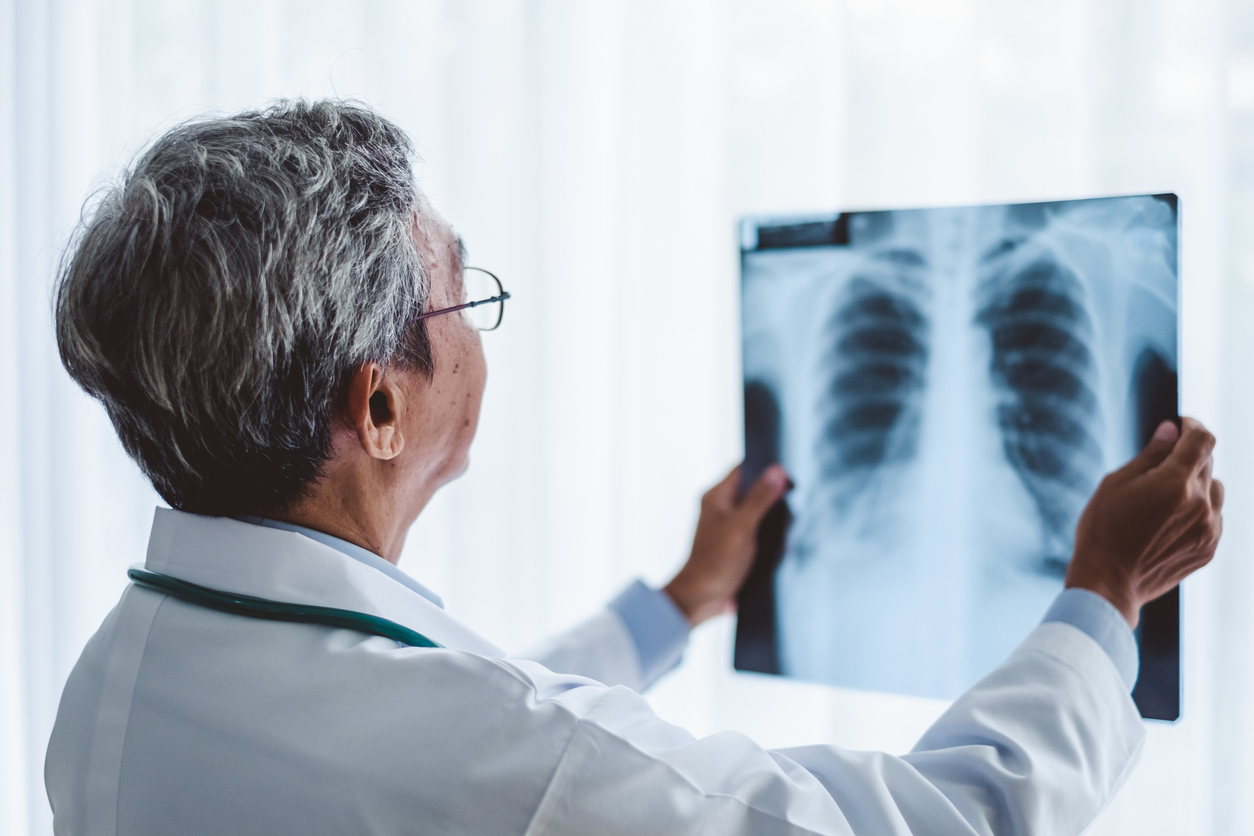
Summit Health’s James McPherson, MD, and Byron Patton, MD, bring more than 30 years of combined experience to their thoracic surgery practice in Berkeley Heights, Clifton, and Florham Park, NJ. They focus on helping patients with various diseases of the lungs, esophagus, stomach, and chest cavity.
One of these diseases — lung cancer — is the leading cause of cancer death in the U.S. While the number of new lung cancer cases is decreasing — partly because people are quitting smoking — Drs. McPherson and Patton emphasize there’s more work to do. Early detection and treatment are a big part of that work.
Lung cancer screening with life saving potential
“The only way we’re going to make inroads on lung cancer is to catch it early,” says Dr. Patton. Currently, only 16 percent of lung cancer cases are diagnosed at an early stage when it’s more treatable, according to the American Lung Association. And since many lung cancers don’t cause symptoms until they’ve spread, Dr. McPherson says screening can move the needle in a positive direction.
Summit Health offers low-dose computed tomography (LDCT) lung cancer screening, a noninvasive test that uses low-dose radiation to take detailed pictures of the chest. These pictures help identify abnormal areas in the lungs that might be cancerous.
“Low-dose CTs are far more sensitive than chest X-rays in detecting lung cancer,” says Dr. McPherson, noting that chest X-rays were once the only screening method. “By the time a tumor is seen on a chest X-ray, it’s usually quite large and may have already spread.”
LDCT screening is painless and only takes a few minutes. You should have this screening if you’re at a higher risk of developing lung cancer and meet these criteria:
- You’re a smoker or former smoker aged 50 to 80.
- You currently smoke or have quit in the past 15 years.
- You have at least a 20-pack-year smoking history. This is the number of cigarette packs smoked per day multiplied by the years you smoked.
“If you have a history of smoking, talk to your primary care physician,” says Dr. Patton, who considers LDCT screening as important as a colonoscopy or mammogram in terms of lifesaving potential. Research has shown that LDCT screening could prevent more than 12,000 lung cancer deaths among high-risk individuals.
Advanced surgical option now closer to home
Surgery is one of the standard treatments for lung cancer, and Drs. McPherson and Patton are skilled in minimally invasive options that allow patients to recover faster. One of these options is robotic-assisted thoracic surgery, a leading-edge procedure available to Summit Health patients.
In robotic-assisted surgery, the surgeon sits at a console next to the patient, where they control surgical instruments and a small, 3D high-definition camera. The surgeon inserts the camera in one of the small incisions made between the patient’s ribs and places the instruments in the others. Using the console’s controls, the surgeon then removes any cancerous lung tissue.
Both surgeons appreciate the magnified view and ability to make controlled, precise movements without having to make larger incisions. But even more, they value the benefits to the patient: less pain after surgery, less blood loss, a shorter hospital stay, and a faster return to normal activities.
“You usually can go home one to two days after surgery,” says Dr. McPherson. This can also allow the patient to move more quickly to the next phase of their lung cancer treatment, such as radiation therapy and chemotherapy.
While Dr. McPherson says surgery is ideal for treating early-stage lung cancer, it may not be for everyone. Thoracic surgeons often collaborate with other specialists, including pulmonologists and medical, surgical, and radiation oncologists, on treatment plans that best meet the patient’s needs.
The advantages of connected lung cancer care
Lung cancer diagnosis and treatment can be complex. A multidisciplinary approach that involves collaboration between surgeons and other specialists is instrumental in achieving the best possible outcomes.
Dr. Patton says one way providers work together at Summit Health is through a thoracic surgery tumor board, a group of more than 20 providers who meet regularly to discuss cancer cases. “It allows us to provide input and arrive at a group decision quickly, rather than the patient having to see all these specialists individually,” he says.
“Each of us brings something different to the table,” adds Dr. McPherson. “Many of these doctors have been trained at the top cancer centers in the country.”
Another resource is Summit Health’s lung cancer navigator, who guides patients through the health care system. This person helps coordinate appointments to keep care on track and connect patients with additional support, such as behavioral health and nutritional services.
“It can be a confusing time, so patients can reach out with any questions or concerns,” says Dr. Patton. “Having a navigator is a big advantage.”
About thoracic surgery at Summit Health
In addition to lung cancer treatment, our thoracic surgery team performs procedures to treat cancers of the esophagus and trachea, gastroesophageal reflux disease (GERD), and hiatal (or paraesophageal) hernia. Our physicians create a comprehensive and individualized treatment plan for every patient using minimally invasive techniques whenever possible.
